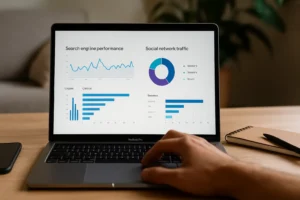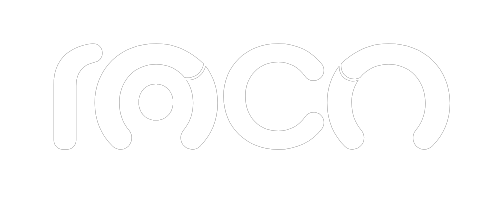In the dynamic world of digital marketing, knowing your competitors is necessary to stand out and gain a competitive advantage. But how to do it effectively? The answer lies in strategic competitor analysis. In this article, we will delve into what this practice consists of, its benefits, and how to carry it out effectively.
What is Strategic Competitor Analysis?
Before we delve into the process, we need to understand what it consists of. competition analysis. This practice involves studying and evaluating both your direct and indirect competitors. By identifying their strengths and weaknesses, you gain a clear view of the competitive environment, allowing you to adjust your own strategy. Thus, knowing what competitor analysis consists of becomes a question for any business looking to improve its positioning in the market.
Benefits of Strategic Competitor Analysis
Conducting a strategic analysis of the competition brings numerous advantages that can transform your business approach:
- Identification of Opportunities and Threats: This analysis allows you to detect unexploited market niches and anticipate potential threats that could affect your business.
- Continuous Improvement: By studying industry best practices, you can implement constant improvements to your products or services, positioning you as a benchmark in your sector.
- Increased Competitiveness: Knowing your competitors' weaknesses allows you to adjust your offering more effectively, differentiating yourself in a saturated market.
- Marketing Strategy Optimization: The analysis provides you with concrete data to adjust your digital marketing, SEO and Google Ads campaigns, thus increasing their effectiveness.
Components of Competitive Analysis
Conducting a competitor analysis requires a structured and methodical approach. Below are the most important components to carry out this analysis effectively:
Information Collection
The foundation of a good analysis is the detailed collection of information about your competitors. One way to do this is to visit their website, where you can observe aspects such as design, content and offers. Also, analyze the messages they use to attract their audience, which will give you an idea of how they position themselves in the market and how they communicate their value proposition.
Another aspect is to review their social media. Analyze the type of content they share and how they interact with their community, which will allow you to better understand their perception in the market. It is also advisable to perform a keyword analysis using tools such as SEMrush or Ahrefs to identify the keywords they are ranking for. Finally, analytical tools provide you with data on your competitors' traffic and conversions, helping you identify opportunities for improvement.
Market and Customer Assessment
Market segmentation is a key process in this analysis, as it allows you to identify the different segments your competitors are targeting, such as specific demographic groups, geographic locations, or types of consumers. Not only will this help you get to know your audience better, it will also allow you to adjust and personalize your offers to capture the attention of these segments more effectively.
In turn, understanding your competitors' customer profile is necessary, as by researching their demographics, interests, desires and purchasing behaviors, you can gain valuable insights that allow you to refine your own marketing strategy. Knowing your ideal customer is essential, as it allows you to create more accurate messages, products tailored to their needs and, ultimately, improve your conversion rate.
Identification of Strengths and Weaknesses
Your competitors’ strengths may include strong SEO rankings that allow them to dominate the top spots in search results, a prominent presence on platforms like Google Ads that increases their visibility, or an active social media community that encourages audience engagement. They may also have an established online reputation, which gives them trust with their customers.
On the other hand, identifying your competitors' weaknesses, such as a lack of relevant content that responds to user needs or a poorly optimized web structure that makes navigation and conversion difficult, allows you to detect these weak points, which you can take advantage of to improve your own proposal, offering solutions that better satisfy the public's expectations and overcome the deficiencies of the competition.
Implementing Strategic Competitor Analysis in your Marketing Strategy
Once you've gathered and analyzed all the necessary information, it's time to implement it into your strategy. Here's how to do it effectively:
SEO and Google Ads optimization
Identifying your competitors' effective keywords is essential to adjust your SEO strategy and Google Ads campaigns. Use these words not only to improve your positioning, but to create optimized content that provides real value to users, answering their questions and concerns. Also, adjust your SEO campaigns accordingly. international Google Ads to target the same audiences, but with an enhanced approach that highlights the unique benefits of your offering. This will help you stand out from the competition and capture more attention from potential customers.
Website Improvement
If you've noticed that your competitors have a better-structured website or a better user experience, it's time to make adjustments such as:
- Responsive Design: Make sure your website is mobile-friendly, as more and more users are browsing from their phones.
- Loading Speed: Optimize your website's loading speed, as this not only improves the user experience, but also affects your positioning on Google.
- Quality Content: Provide content that answers your target audience's questions, educates them, and keeps them interested in your products or services.
Social Media Strategies
Use insights from your competitors' social media strategies to improve your own online presence. Interacting with users fosters connection by responding to your followers' comments and messages, creating an active community around your brand. Also, specialized advertising campaigns attract your competitors' followers, offering a fresh and attractive approach.
Innovation and Differentiation
All this analysis should be a springboard for innovation. It is not just about keeping up with your competitors, but about outperforming them. Strategic competitor analysis will allow you to develop unique offerings that clearly differentiate themselves from those offered by your competitors, creating an irresistible value proposition for your customers.
Additionally, investing in better customer service can be a great differentiator in a competitive market, ensuring that users choose your brand over others. Lastly, leveraging technology and automation will allow you to optimize processes, offering a more efficient and personalized experience that attracts and retains your customers.
Boost your Competition Strategy
At Agencia RocoWe help you understand and make the most of strategic competitor analysis to enhance your digital marketing strategy. Remember that a well-done analysis not only gives you a competitive advantage, it also allows you to adjust your approach and strategies to meet your business objectives. The key to success lies not only in knowing your competition, but in anticipating their moves and outperforming them.





